We shall see all kinds of animals with shortest lifespan across the world such as insects, mammals, marsupials, rodents, octopus, fishes, dogs and the list goes on.
In this article, We are looking for the world’s shortest living animals that definitely spark your interest to know their behaviour with pictures.
Table of Contents
Animals with Shortest Lifespan
Of course, It’s interesting to study animals with the shortest lifespan because you might be anticipating to know, What it can do in its short lifespan, How soon it reaches sexual maturity, How they can reproduce in its short lifespan and more over How they would look.
So let’s start with the First animal with the shortest lifespan.
Mayfly: 1 Day

Mayfly is also known as shadfly, fishfly, up-winged fly, is an aquatic insect that usually lives in water by burrowing in the bottom of lakes, ponds, etc. There are about 3,000 different species of mayfly known to exist that all show long tails, long wings.
They are found to live only about 24 hours. In this short amount of time the female should undergo mating to lay eggs before they die.
After hatching, they spend about 2 years of life at the bottom of the water habitat undergoing different stages of their lifecycle till they can grow wings. These mayflies with wings can live about a day. However, Most people ignore the two years period they are spending at the bottom of the water habitats.
Interestingly, Mayflies are the indicators of a clean, unpolluted water environment.
Culex pipiens Mosquito: 7 Days
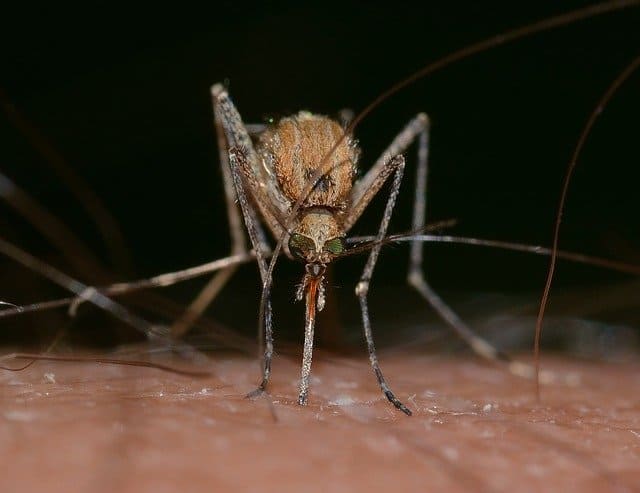
Culex pipiens is also known as house mosquito is a species of mosquito that usually live in temperate and tropical regions. These mosquitoes feed the human blood, pigeon and dove blood as well. However, In order to store fat, they feed on nectar, and sugary foods as well.
These Bloodsuckers, Mosquitoes live about 7 days. In this lifespan, she can lay at least 300 eggs.
Aphids: 1 Month
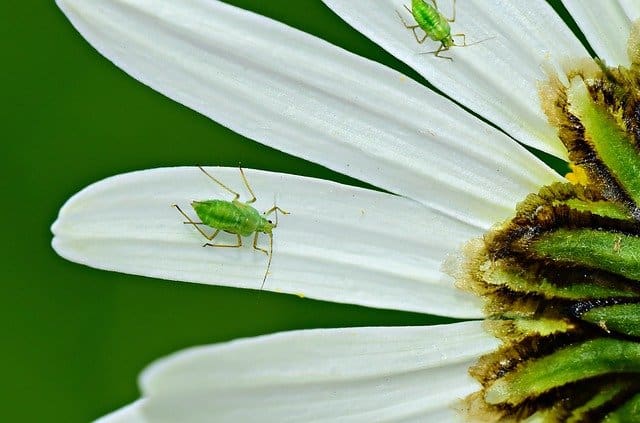
Aphid is also known as greenfly, blackfly is a very small sized sap-sucking insect that occurs in many colors such as green, yellow, brown, red, black, etc. These insects are the pests on plants thus can weaken the plants including those with economical importance, medicinal values and others as well.
They have a shortest lifespan of about a month. In this time they can reproduce sexually or sometimes asexually that involves only females resulting in more offspring.
Houseflies: 7 Week (49 Days)
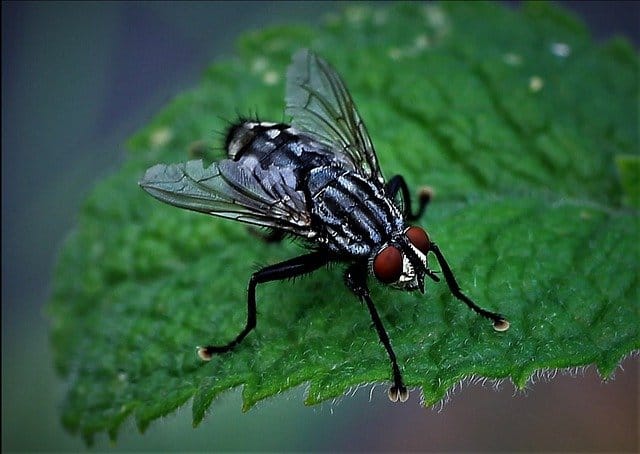
The housefly is a fly that belongs to the Insecta. As you already know these have a short lifespan so they adopted many features to make sure they reproduce. Female Housefly usually undergoes only one time mating, So for this reason, they evolved to store sperm for later needs.
They have a lifespan about 2-4 weeks depending on the availability of food and optimal temperature and environments. However, they have managed to produce as many as 1,000 eggs in their short lifespan.
Fruit flies insect: 50 Days
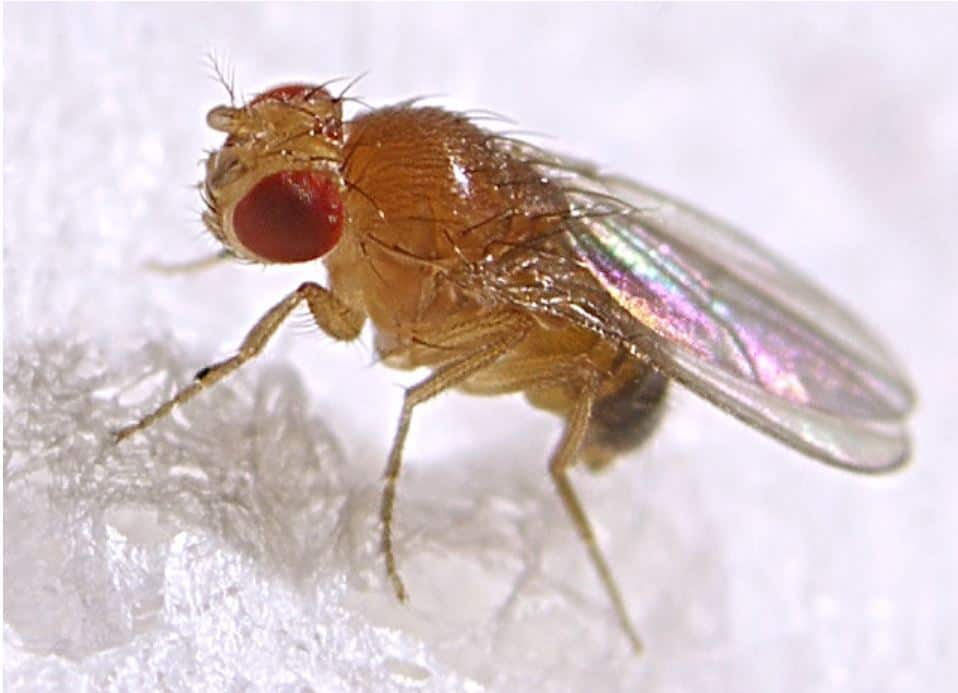
Fruit flies including Drosophila melanogaster, vinegar fly and other is a species of fly that feeds on fruit and other vegetable matter.
At an optimal temperature, the fruit fly can thrive for about 40 to 50 days. In this period of a lifetime, they do an essential job mainly mating and reproducing. A female can lay as many as 500 eggs near the fermenting fruits so that the hatched larva can feed on fermenting food.
Interestingly, The lifespan of fruit flies is affected by temperature.
Indian meal moth : 55 Days
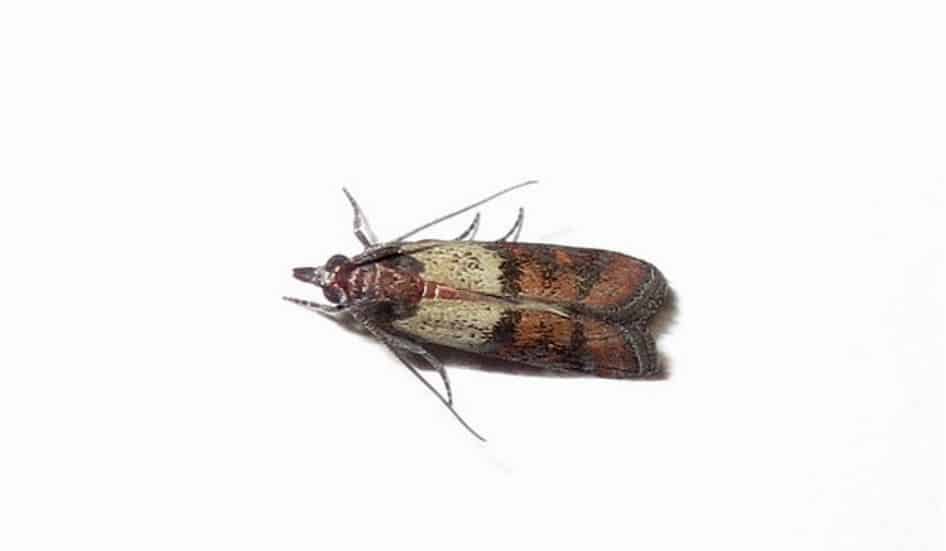
The Indianmeal moth, also known as flour moth, weevil moth, pantry moth, or simply grain moth, is an insect and is not related to India as its name suggests. These feed on grains, grain germs depending on which stage of the life cycle they are undergoing such as larvae, pupa, or adult.
They have a lifespan of 55 days in optimal environments. However, its lifecycle may take as long as 305 days depending on its environment.
Dwarf Pygmy goby: 2 Month (60 Days)

The dwarf pygmy goby, also known as Philippine goby is small-sized reef-dwelling fish that is adapted to brackish water and is found in the region of Asia. ANOTHER LINE.
They have a lifespan of 2 months that varies due to the lifecycle they undergo. For example, They need about 40 days to reach sexual maturity along with other time variable stages of the life cycle.
Bed Bug: 2-4 Month

The bed bug is a nocturnal insect known to feed on human blood that could bring side effects to the victim such as redness, rashes, skin allergy, blisters, and other health issues. They usually hide in bed parts, mattresses, box springs, curtains, baseboards, electrical switchplates, etc.
They have a short lifespan of about 2-4 months. However, That is enough for that tiny creature because in this shorter lifespan the female can lay about 50-500 eggs depending on the species.
Turquoise Killifish : 3-12 Months

The turquoise killifish is also known as Nothobranchius furzeri is a species of killifish found in Zimbabwe, Mozambique, Africa, etc. Its eggs can delay hatching up to years by undergoing the diapause phase, especially if the environment is unfavorable.
They have the shortest lifespan of about 3-12 months, As a result, they will attain faster sexual maturity among the vertebrates-Only about 14 days after hatching. However, They can live longer in captivity about 3-15 months as it enables a good environment and foods as well.
DragonFly: 6 Months

A dragonfly is a flying insect that is identified by large compound eyes with about 20,000 ommatidia or Ocelli cells, strong body build, large, transparent wings, and long tail. Its life cycle includes Eggs, nymphs and naiads-a larva, and adults. Unfortunately while undergoing these stages it is prone to predators such as small fishes, amphibians, birds, lizards.
Dragonflies have a short lifespan of about 6 months. However, Its larva stage can take up to 5 years to move on to the next stages.
Brine Shrimp: 6 Months
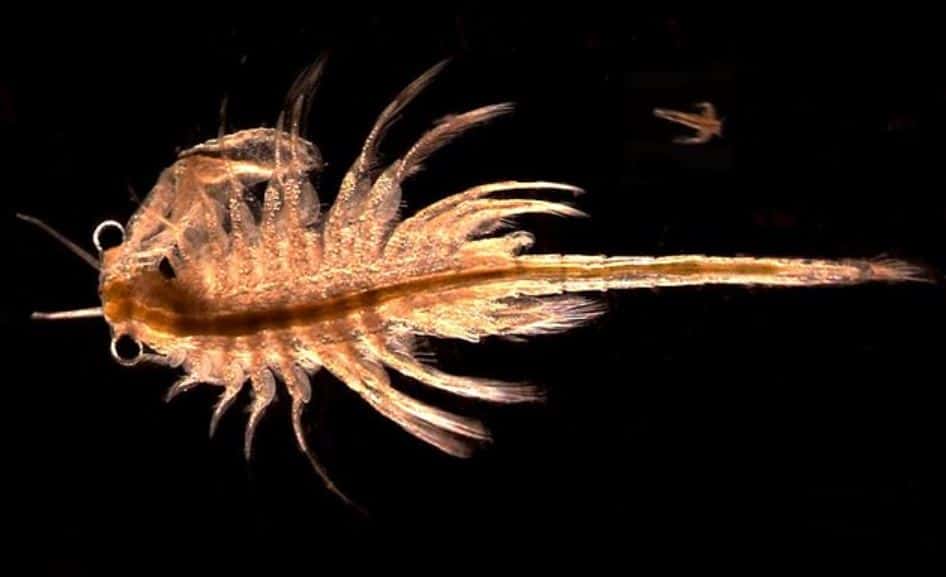
The brine shrimp is an aquatic crustacean that inhabits salt lakes and feeds on occurring planktonic algae, yeast, wheat flour, soybean powder, egg yolk, etc. Across the world brine shrimp is used as food as it is high in protein and omega 3 fats.
They have a short lifespan of about 6 months. However, water, saltwater, or freshwater in which they live plays an important role in keeping them healthy along with food and temperature.
Monarch Butterflies: 8-9 Months
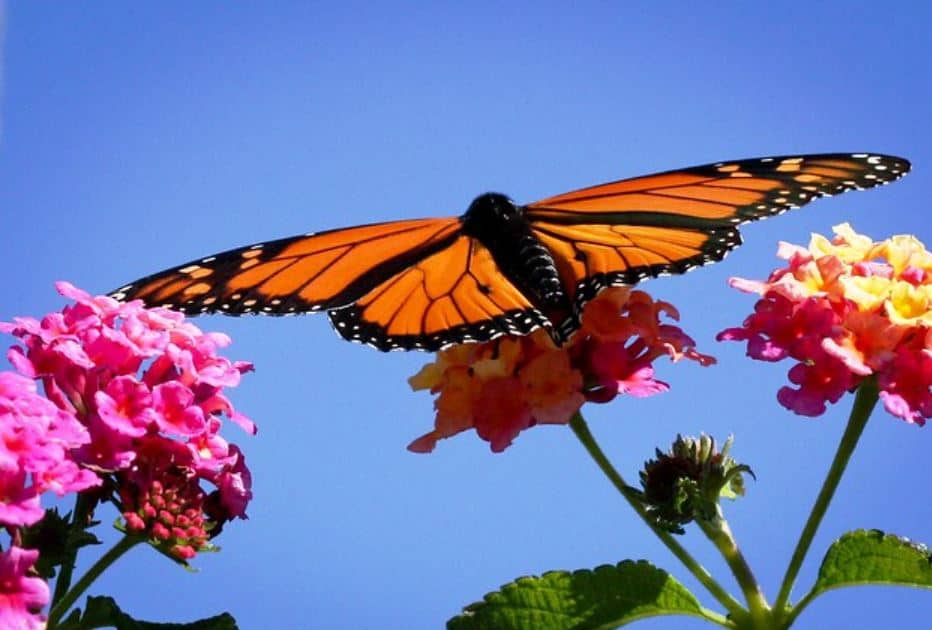
The monarch butterfly is also known as the common tiger, wanderer, black veined brown is a milkweed butterfly found in North America, Canada ,Caribbean, etc. This butterfly feeds on poisonous milkweed in their larval or caterpillar stage that is stored in its body and upon reaching adult stage causes the predators to vomit if they eat these poisonous butterflies.
They have a short lifespan of about 8 to 9 months. However, some typically live about two months, these duration changes depending on the stages of the life cycle it undergoes which is influenced by the environment. In a good environment, a caterpillar can grow fast such that it can gain 100 times its initial weight.
Moon Jellyfish: 1 year

Moon jellyfish is a species of jellyfish that is also known as saucer jelly found in the ocean across the world, especially in temperate and good climate regions. These are identified by the transparent body, 1-2 feet in body size, long tentacles, round bell, and four horseshoe-shaped gonads.
They have a lifespan of about 8 to 12 months. However, It may vary due to the delayed phase of its life cycles, sexual maturity attainment, and gamete production.
Panther Chameleon: 1 Year

The panther chameleon is a species of chameleon identified by about 8 inches in length, male is larger with bright color than the female, the possible colors are blue, green, brown, red, orange, etc. These amazing reptiles are known to thrive in Madagascar.
They can live for about a year. However, Its lifespan can vary depending on its environment, wild or captivity. While other species of chameleons, records show they have lived 5-8 years.
Eastern Hercules Beetle: 2 years
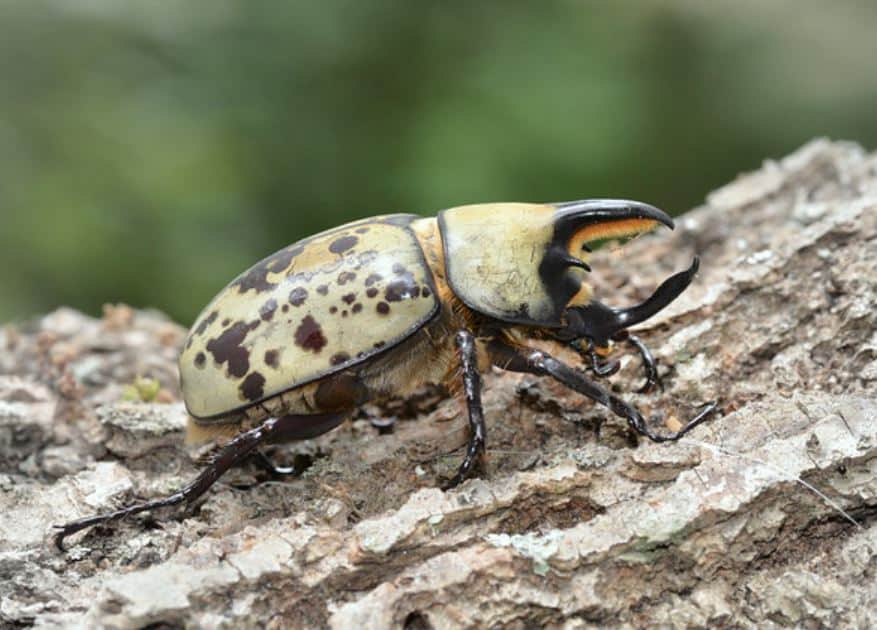
The eastern Hercules beetle is a large sized beetle belonging to a rhinoceros beetle found in Florida, Texas United States which is identified by the two large pincer shaped horns, weigh about 140 gram, about 3 inches of body length and occurs in many colors such as green, gray, tan, etc.
They have a short lifespan of about 2 years that involves 18 months in larva stage, other 3 months spent as pupa stage and remaining about 13 months as an adult.
Common opossum: 2 years

The common opossum, also called the black-eared opossum, is a nocturnal marsupial found in Mexico, Bolivia ,Trinidad, Tobago, etc. These animals have been known to play dead while also can release bad odour to ward off its predators away and are immune to snake venom.
They have a lifespan of 2 years, that is shorter lifespan when compared to Virginia opossum with 4 years of lifespan. However, they can live longer than 2 years under a good environment and captivity.
Chinese dwarf hamsters: 3 Years

Chinese dwarf hamsters are also known as Chinese striped hamsters, Chinese dwarf hamsters is a small species of rodents found in China, Mongolia, etc. They are identified by their small size that gives them dwarf in its name but are not actually a dwarf species, have brown-black stripes on its body with a light colored belly, with a long visible tail.
They have a short lifespan of about 2-3 years that may vary under captivity. However, stress can affect their lifespan while also imparting some unusual behaviors such as chewing anything that they have around them under stress that can be treated if they receive friends, toys and exercise.
Guinea Pigs: 4 Years
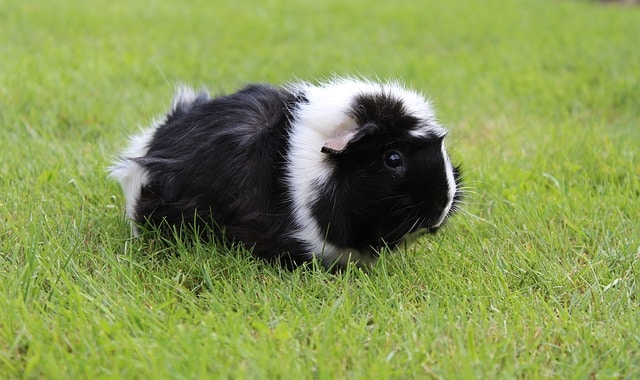
The guinea pig is also known as the cavy, domestic cavy is actually a species of rodent and is mainly used in laboratories for experiments and also kept as pets across the world because of its cuteness and intelligence. Interesting about these guinea pigs is they are neither related to guinea nor related to pigs.
They have a lifespan of about 4-7 years which is variable due to how well they are treated as a pet or as an experimenting animal in the lab. Lifespan also depends on its health and environment, especially toys, friends, and freedom can increase their lifespan.
Dumbo Octopus: 5 Years
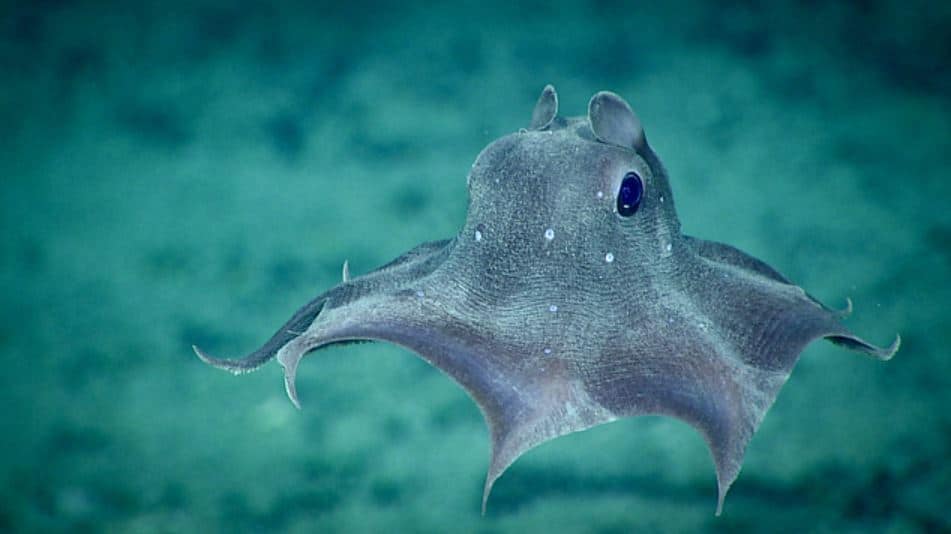
Dumbo octopus is a species of octopus found in sea depth of about 4,000 m, simply 4 Km deep where enough sunlight and heat is not available. Dumbo octopus is called so because of the presence of fins that resemble the ear of an elephant- a Disney character and have arms with skin folded that upon expanding resemble an umbrella.
They have a life expectancy of about 3-5 years. However, as an intelligent creature that lives in large depths of the ocean where its mates are less visible, females adapted a mechanism to store the sperms that can be used for later needs. That’s interesting. and remember Dumbo octopus are not really Dumb. Right!.
Bordeaux Mastiff(Dog): 7 Years

The Bordeaux Mastiff is also known as Dogue de Bordeaux, French Mastiff, is a french origin dog that is identified by its stock body, relatively large heads among the other dog breeds, and expressive eyes. Its head is relatively large such that when it holds a cricket ball in its mouth you can’t see and guess whether it is holding the ball or not.
They are known to have a shorter lifespan than other dog breeds that is about only 5-6 years. However, the oldest dog lived about 12 years. Interestingly, When they reach 7 years or around 7 years of age, Its dog owners are known to celebrate them.
